The main reason why Taiwan became one of the most densely populated countries in the world, and a net exporter of food until the 1960s, is that local conditions favor productive agriculture. Fertile soils and a subtropical climate made it possible — at least until urban sprawl and industrialization decimated a great deal of farmland — to grow globally significant quantities of rice, sugar, sweet potatoes and other commodities.
There’s a downside to the warm and humid weather, however. Insects thrive in this kind of environment. They’re poikilothermic organisms, meaning they depend mainly or entirely on the ambient temperature of their surroundings. When it’s warmer, their metabolic rates and reproductive cycles speed up.
Even though modern agriculture has caused a decrease in biodiversity, insects and other pests continue to torment those who grow our food. Rice farmers must remain vigilant lest beetles, borers, leaffolders, planthoppers, or weevils gain a foothold. Horticulturalists are at war with the oriental fruit fly.
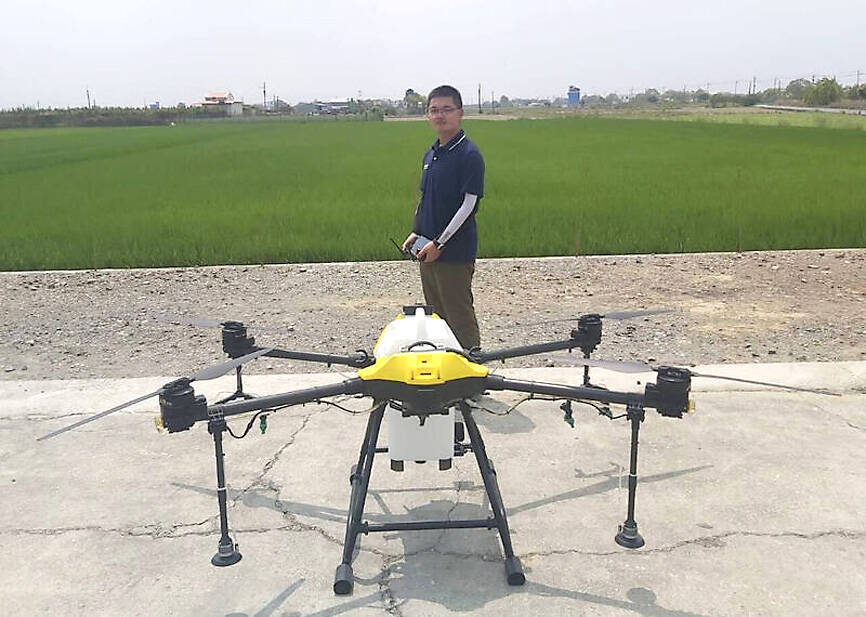
Photo: Yang Chin-cheng, Taipei Times
According to market research published in early 2023, Taiwanese farmers will soon be spending US$800 million per year on pesticides. But chemicals aren’t the only weapon in their arsenal: Over the past century, agriculturalists have embraced biological pest control, or biocontrol as it’s also known. This method involves identifying natural mechanisms (such as predation and parasitism) through which a pest might be reduced or eliminated, then introducing one or more of that pest’s natural enemies. Rural residents who rely on cats to keep rodents at bay are utilizing a form of biocontrol.
Biocontrol is often cheaper than applying agrochemicals, especially if the introduced “natural enemy” can thrive without further human assistance. It’s also better for those working the land, because they aren’t exposed to the toxins that pesticides, by definition, contain.
FARMERS’ FRIENDS
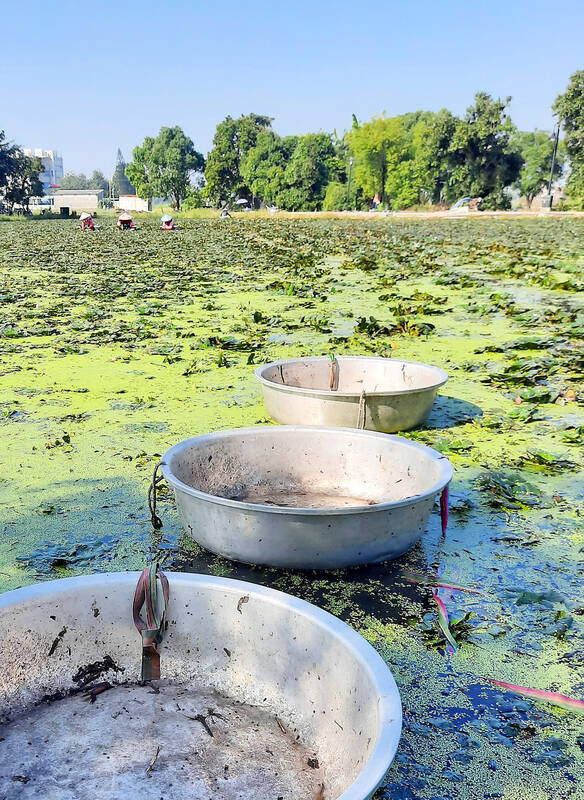
Photo: Steven Crook
An undated article on the Web site of the Ministry of Agriculture’s Taichung District Agricultural Research and Extension Station claims that, in 1905 or 1909, the introduction of the Australian ladybird to Taiwan to counter the cotton aphid was “the first case of successful biological control in Asia.” The threat that particular aphid poses to those growing cucumbers and other crops hasn’t been completely neutralized, however. As recently as 2017, government agriscientists were researching chemical treatments that might limit aphid population growth.
In Taiwan, and more recently in India, specimens of Synonycha grandis (one of the world’s largest ladybird species) have been released to combat infestations of the sugarcane woolly aphid.
After Brontispa longissima, a leaf beetle that gnaws coconut-palm shoots, devastated groves in Pingtung County, a Taiwanese scientist based in Hawaii urged the authorities to rear and deploy Tetrastichus brontispae. This tiny parasitic wasp attacks Brontispa longissima during the latter’s larval or pupa stage, using it as both food and shelter.
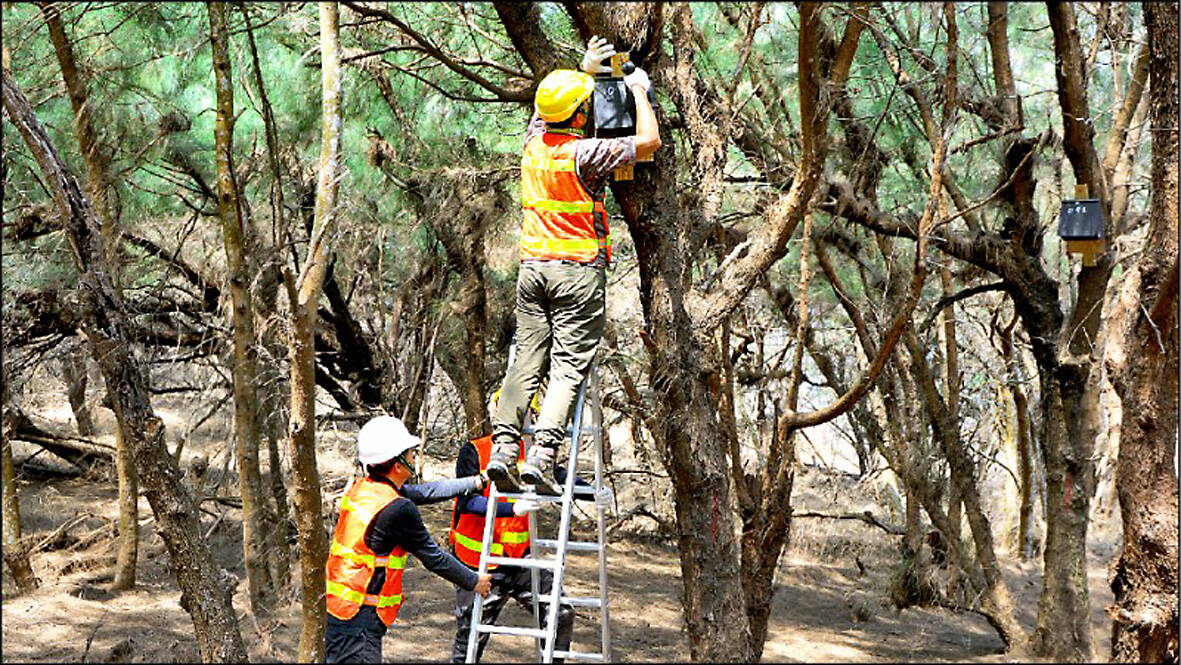
Photo courtesy of Taipower
The fungus Metarhizium anisopliae has been mentioned as another potential natural enemy of Brontispa longissima. It’s known to kill certain aphids, cockroaches, locusts and ticks, but — just as pesticides often cause a lot of collateral damage — the fungus may also prove fatal to non-target organisms like butterflies and moths.
That’s not to say that all moths are benign. Specialists at the World Vegetable Center, an international research institute in Tainan’s Shanhua District (善化), have been researching wasps and flies that prey on Maruca vitrata, a lepidopteran pest that feeds on cowpea, pigeon pea, mung bean and soy crops in tropical zones throughout the world.
The center has also worked on “farmscaping” — the cultivation alongside crops of certain plants known to support bats, birds or bugs that parasitize or prey upon insect pests.
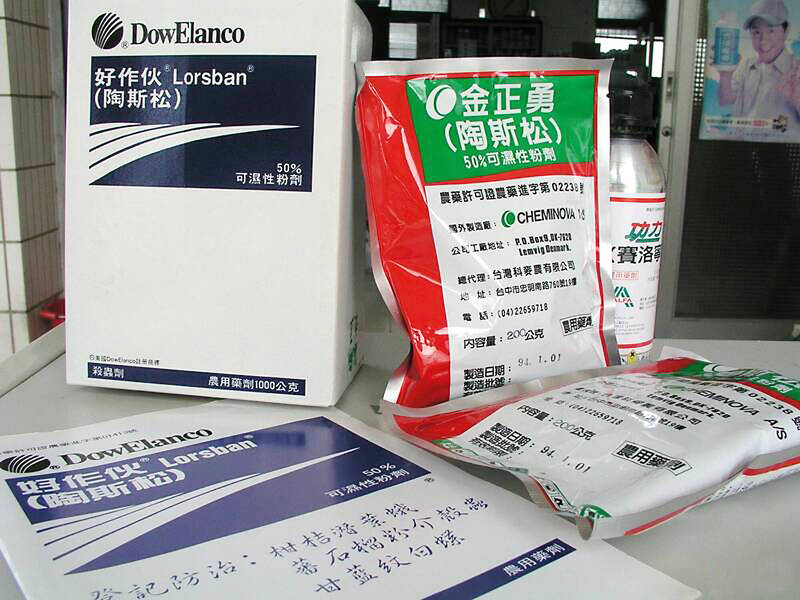
Photo: TT file photo
One alternative to killing pests is to provide them with alternative food sources. In February, Taiwan Panorama quoted a farmer near the Jacana Ecological Education Park (水雉生態教育園區) in Tainan’s Guantian District (官田) who takes a holistic approach to the creatures that like to eat the water caltrops that are the primary habitat of Taiwan’s pheasant-tailed jacanas.
Rather than try to extirpate those turtles and small rodents, the farmer plants water spinach for the former to feed on. And he tolerates the latter because they sometimes eat the golden apple snails that also consume caltrop shoots and leaves.
The golden apple snail (Pomacea canaliculata) is one of the country’s most notorious pests. Claims that it has no natural predators in Taiwan aren’t quite accurate, as several animals (among them the common moorhen, the Chinese soft-shelled turtle, and the Japanese mitten crab) have been observed to eat eggs, small juveniles or even adult snails. The problem is these species prefer creeks and ponds to the paddy/caltrop field ecosystems where the snails cause losses.
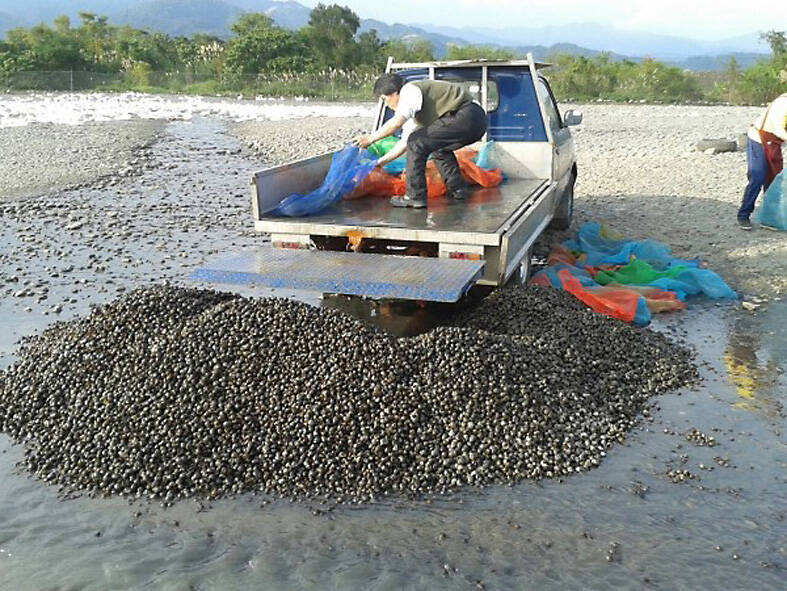
Photo courtesy of the Animal and Plant Control Center Yilan County
On April 30, video of a crested serpent eagle searching for food in a reforestation area was posted online by National Pingtung University of Science and Technology’s Bird Ecology Lab, with a note that these raptors often eat fish, frogs and Giant African snails (Achatina fulica Bowdich, a species that features in rural cuisine).
One netizen left a comment lamenting that Taiwan’s eagles don’t appear to have developed a taste for golden apple snails. But if crows can be educated to pick up cigarette butts and deposit them in a certain place in order to collect a reward — which initiatives in Sweden and France suggest is possible — perhaps crested serpent eagles could be trained to attack troublesome gastropods.
Given the frequency of outbreaks, it’s surprising that those who live in neighborhoods where dengue fever has been a problem show little interest in mosquitoes’ principal natural enemy, bats.
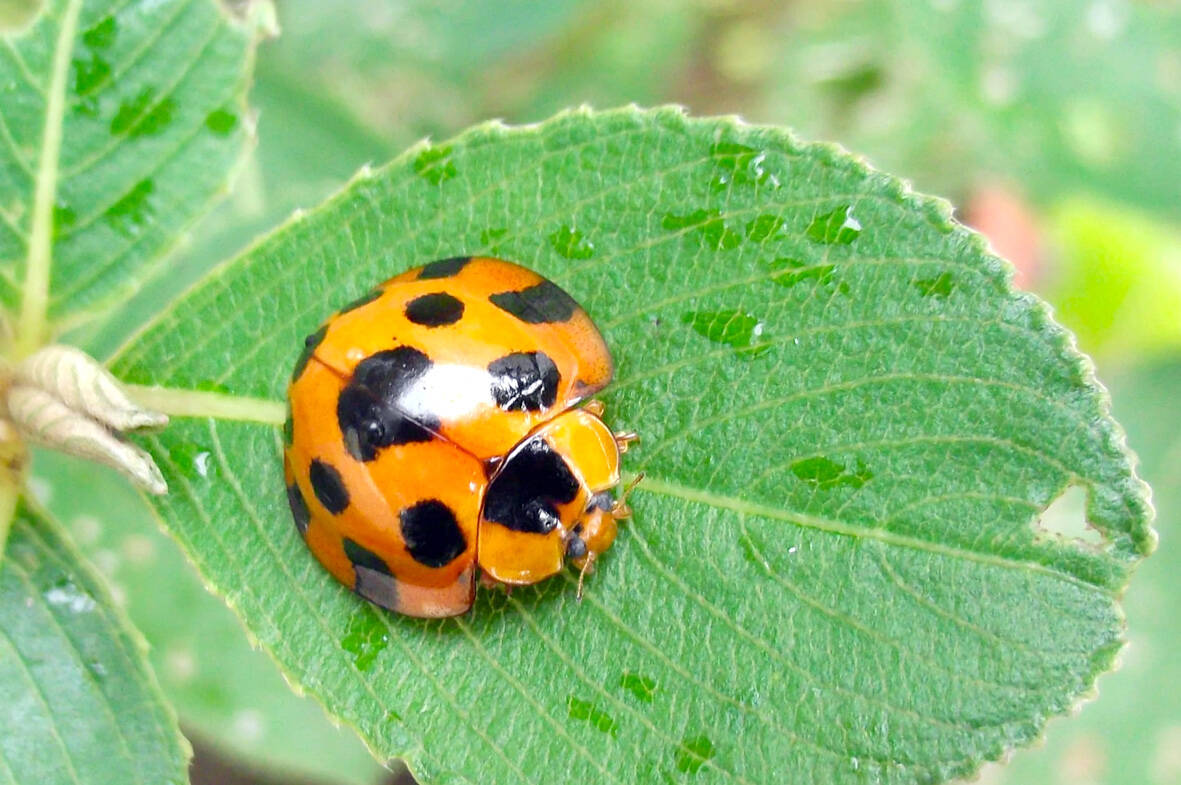
Photo courtesy of Wikimedia Commons
Nansheng Community (南勝社區) in Kaohsiung’s Cishan District (旗山) is one of the few places where there’s been an effort to attract bats, each of which may catch 1,200 mosquitoes per night. Around 70 bat houses were installed across a 1-hectare patch of land, resulting in a noticeable reduction in mosquito numbers, Public Television Service (PTS, 公共電視) reported on July 25, 2019.
THE CLIMATE CHALLENGE
A paper published last year in the Journal of Taiwan Agricultural Research warns that climate change is significantly challenging agricultural ecosystems, “impacting pest and natural enemy dynamics and the effectiveness of biological control.” The authors focus on predatory mites, saying they’re “crucial in the sustainable management of various agricultural pests” yet “particularly susceptible to these changing conditions.”
The authors — Taiwanese researchers based at institutions in Tokyo, Taipei and Taichung — point out that identifying highly adaptable species is just the first step.
“Creating supportive agricultural ecosystems that can sustain these selected biological control agents… is equally important,” they write.
Ecosystem enhancements such as diversified planting, windbreaks and shade structures create microclimates that can shelter biocontrol agents during spells of extreme weather. What’s more, to maintain predator populations, land managers should ensure that alternative food sources are available during periods of low pest activity.
Arguing that the future of biocontrol in agriculture “hinges on our ability to innovate and adapt,” the authors urge further research and practical steps to bolster the adaptability of mites. Only in this way can we, they conclude, “ensure the sustainability of biological control as a fundamental component of integrated pest management in the face of global climate change.”
Steven Crook, the author or co-author of four books about Taiwan, has been following environmental issues since he arrived in the country in 1991. He drives a hybrid and carries his own chopsticks. The views expressed here are his own.

Taiwan can often feel woefully behind on global trends, from fashion to food, and influences can sometimes feel like the last on the metaphorical bandwagon. In the West, suddenly every burger is being smashed and honey has become “hot” and we’re all drinking orange wine. But it took a good while for a smash burger in Taipei to come across my radar. For the uninitiated, a smash burger is, well, a normal burger patty but smashed flat. Originally, I didn’t understand. Surely the best part of a burger is the thick patty with all the juiciness of the beef, the

The ultimate goal of the Chinese Communist Party (CCP) is the total and overwhelming domination of everything within the sphere of what it considers China and deems as theirs. All decision-making by the CCP must be understood through that lens. Any decision made is to entrench — or ideally expand that power. They are fiercely hostile to anything that weakens or compromises their control of “China.” By design, they will stop at nothing to ensure that there is no distinction between the CCP and the Chinese nation, people, culture, civilization, religion, economy, property, military or government — they are all subsidiary

This year’s Miss Universe in Thailand has been marred by ugly drama, with allegations of an insult to a beauty queen’s intellect, a walkout by pageant contestants and a tearful tantrum by the host. More than 120 women from across the world have gathered in Thailand, vying to be crowned Miss Universe in a contest considered one of the “big four” of global beauty pageants. But the runup has been dominated by the off-stage antics of the coiffed contestants and their Thai hosts, escalating into a feminist firestorm drawing the attention of Mexico’s president. On Tuesday, Mexican delegate Fatima Bosch staged a
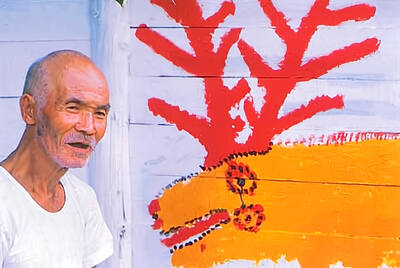
Nov.10 to Nov.16 As he moved a large stone that had fallen from a truck near his field, 65-year-old Lin Yuan (林淵) felt a sudden urge. He fetched his tools and began to carve. The recently retired farmer had been feeling restless after a lifetime of hard labor in Yuchi Township (魚池), Nantou County. His first piece, Stone Fairy Maiden (石仙姑), completed in 1977, was reportedly a representation of his late wife. This version of how Lin began his late-life art career is recorded in Nantou County historian Teng Hsiang-yang’s (鄧相揚) 2009 biography of him. His expressive work eventually caught the attention